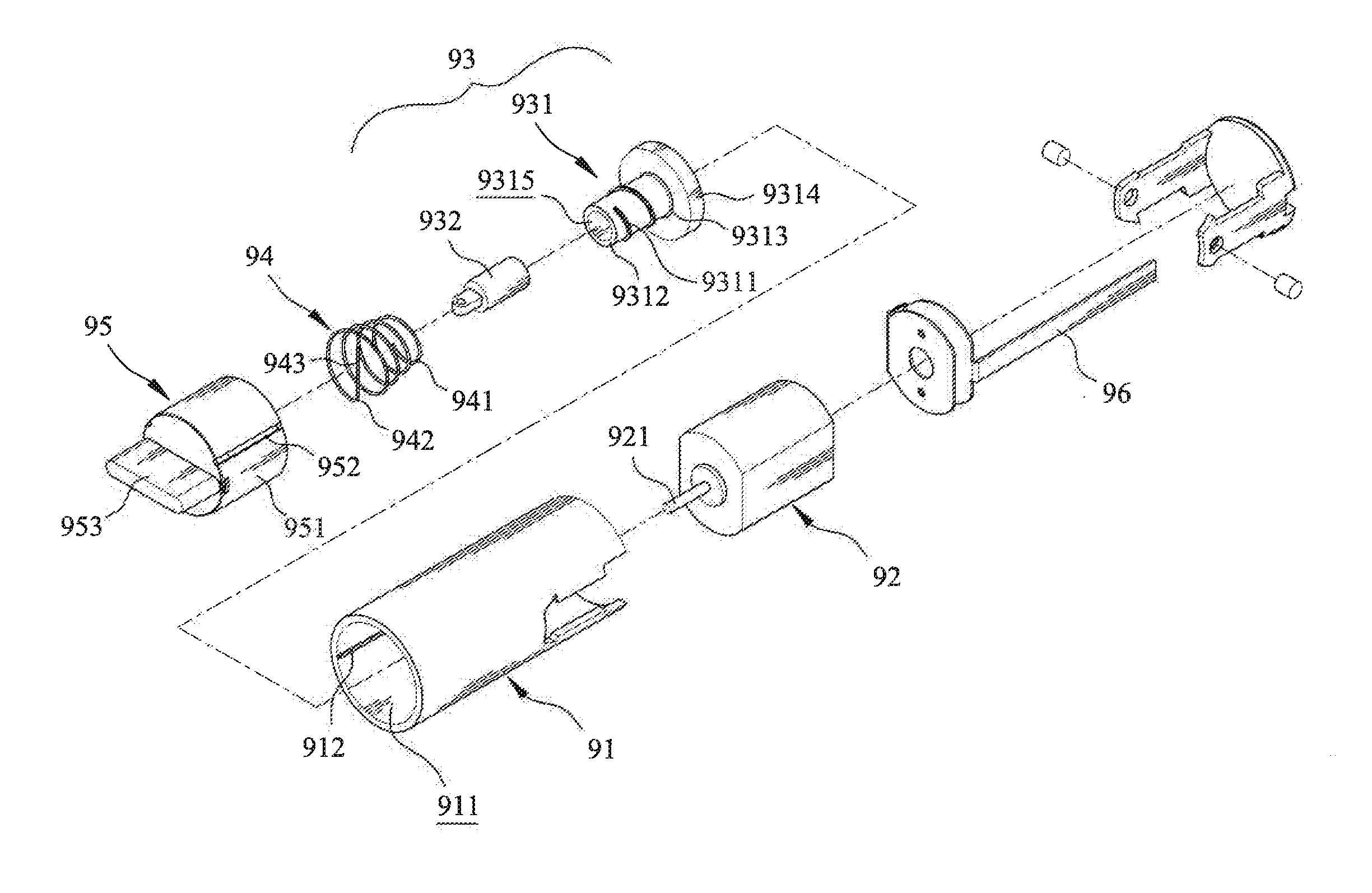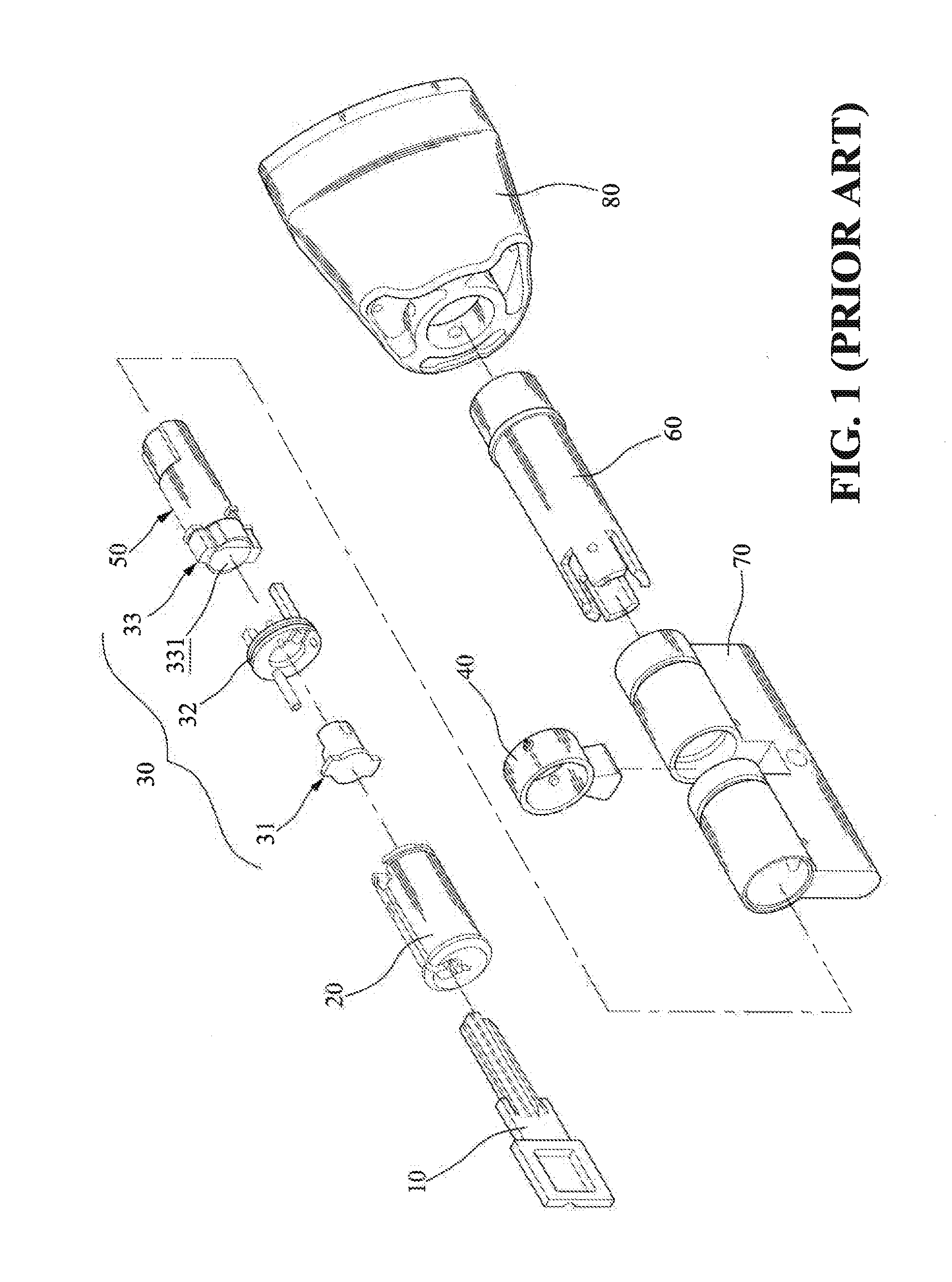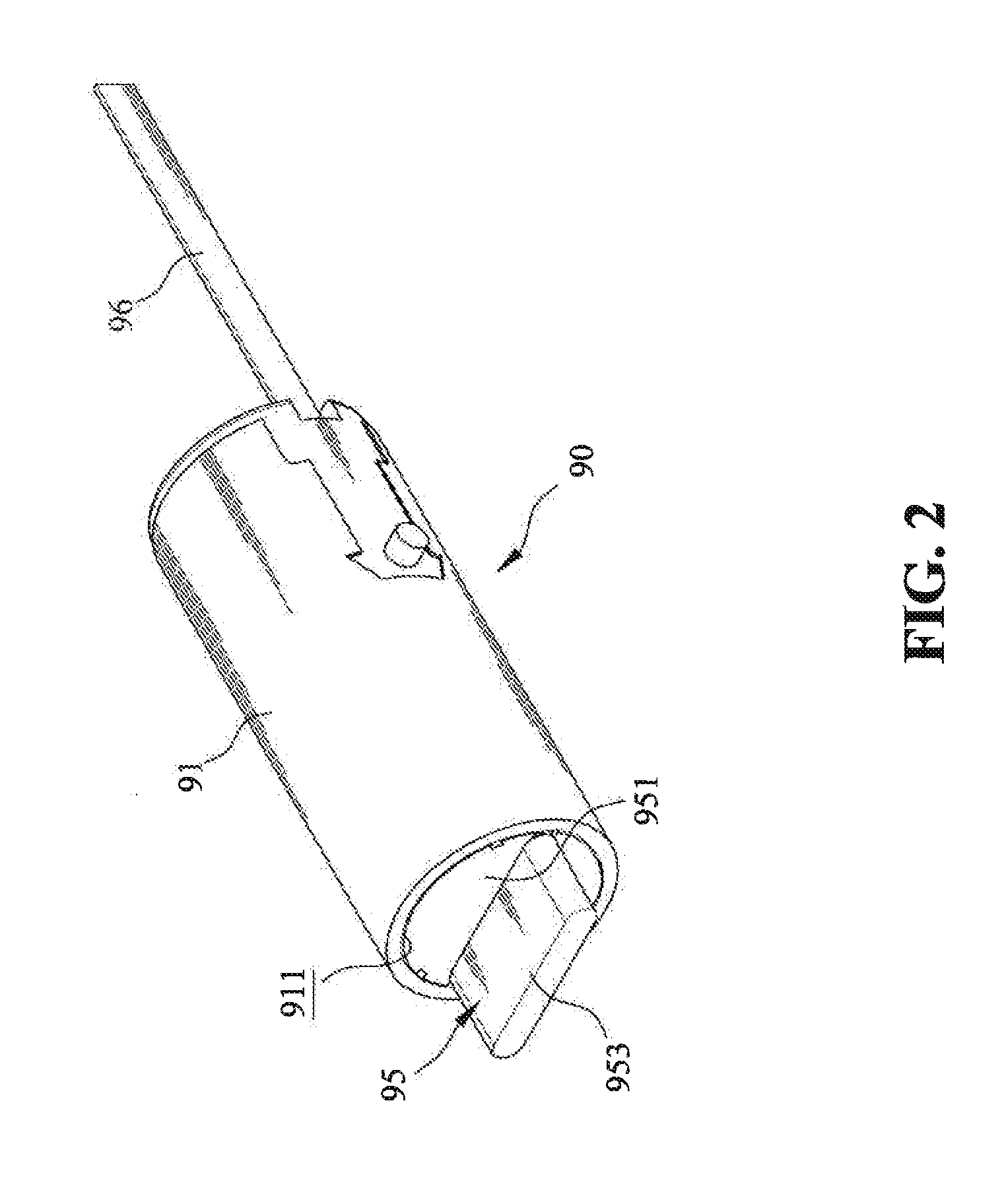Actuating motor set of electronic
- Summary
- Abstract
- Description
- Claims
- Application Information
AI Technical Summary
Benefits of technology
Problems solved by technology
Method used
Image
Examples
first embodiment
[0029]As shown in FIG. 2-4, the actuating motor set 90 of the actuating motor set of the present invention includes the following components: a mounting base 91, a motor 92, a transmission set 93 and a spring 94. The configuration of the mounting base 91 is not limited by the present invention specifically; it can be an integrally formed body as the present embodiment, an assembly of an upper and lower piece or can be in any other forms. The mounting base 91 is formed with a chamber 911, where the motor 92, transmission set 93 and spring 94 are installed, and the first extending tube 951 of the rear clutch member slides within. The shape of the first extending tube 951 should correspond to the shape of the chamber 911, so the first extending tube 951 can slide within the chamber 911. The shapes of the two are not limited. In order to ensure the first extending tube 951 slides in a certain direction, a sliding groove 952 can be formed on the outer peripheral of the first extending tu...
second embodiment
[0037]The motor 92 is axially connected to a transmission set 93. The transmission set 93 includes a worm gear 931a, which is axially connected to the rotating shaft 921. The worm gear 931a can be disposed on the rotating shaft 921 directly, or can also be connected in the configuration of the present embodiment. In the second embodiment, a connecting groove 9315 is formed first on the worm gear 921, and the rotating shaft 921 is axially connected to a connecting member 932, which is disposed in the connecting groove 9315 (please refer to FIG. 3). A bearing (not visible) is further installed on the rotating shaft 921 between the worm gear 931a and the motor 92. When the spring 94 abuts and pushes the rear clutch member 95, it generates a pushing force in the opposite direction against the worm gear 931a. The bearing serves as a cushion to reduce the pushing force, thereby reducing the rotation resistance generated in the worm gear 931a and prolonging the usage life of the transmissi...
third embodiment
[0042]The shape of the second extending tube 971 corresponds to the shape of the chamber 911, so the second extending tube 971 can slide within the chamber 911. The shapes of the two are not limited. In order to let the second extending tube 971 slide in a certain direction, at least one sliding groove is disposed on the outer periphery of the second extending tube 971, and corresponding ribs 912 are disposed in the chamber 911 (refer to FIG. 3). The sliding mechanism described previously is not limited by the For example, the position of the ribs and the sliding groove can be altered, or other corresponding structures that do not have a cylindrical shape can be used. The end of the second extending tube 971 that abuts the abutment part 942 or 942a includes two mounting holes 9721 for connecting the fixing part 9722 on the clutch block 972.
[0043]The clutch block 972 according to the third embodiment includes two latching protrusions 9721. However, the number of the latching protrus...
PUM
 Login to View More
Login to View More Abstract
Description
Claims
Application Information
 Login to View More
Login to View More - R&D
- Intellectual Property
- Life Sciences
- Materials
- Tech Scout
- Unparalleled Data Quality
- Higher Quality Content
- 60% Fewer Hallucinations
Browse by: Latest US Patents, China's latest patents, Technical Efficacy Thesaurus, Application Domain, Technology Topic, Popular Technical Reports.
© 2025 PatSnap. All rights reserved.Legal|Privacy policy|Modern Slavery Act Transparency Statement|Sitemap|About US| Contact US: help@patsnap.com



